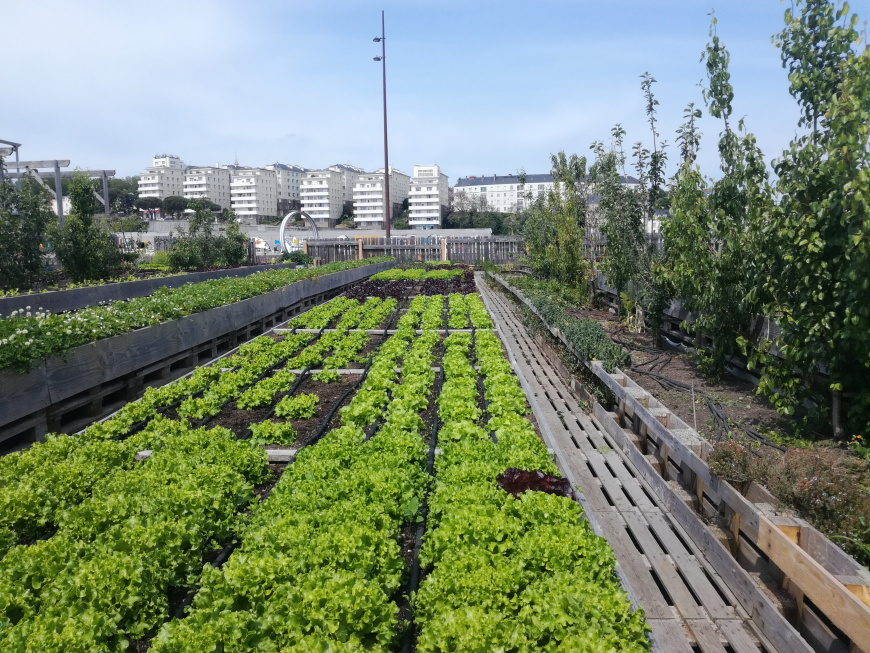City Blooming Things To Know Before You Get This
City Blooming Things To Know Before You Get This
Blog Article
How City Blooming can Save You Time, Stress, and Money.
Table of ContentsThe 8-Second Trick For City BloomingLittle Known Questions About City Blooming.The City Blooming StatementsCity Blooming for BeginnersAbout City Blooming
Intrigued in growing food available in the City of Chicago? Thinking of starting a community yard? Modifications to the Chicago Zoning Regulation allow agricultural usages like area gardens and city ranches in lots of components of the city. Below is a listing of frequently asked questions pertaining to the policies and policies that growers ought to think about when planning a metropolitan agriculture task.
The zoning change does not modify any type of various other codes handling composting, structure permits, buying or renting City owned residential property, business licenses or environmental contamination. There are existing codes that manage these issues and they remain completely effect and might be suitable to your task. Community gardens are normally had or managed by public entities, public organizations or community-based companies and preserved by volunteers.
Urban ranches grow food that is meant to be marketed, either on a not-for-profit or for-profit basis. Because of their industrial function, city ranches require a service certificate. Yes. A community yard is permitted to sell surplus create that was expanded on website if the sales are accessory or subservient to the garden's primary purpose described above.
Excitement About City Blooming
Composting is allowed however just for plant product that is created and utilized on site. The amount of garden compost product can not exceed 25 cubic backyards at any type of provided time according to the requirements in 7-28-715 of the City's Municipal Code. Yes. Since the soil at most new yard websites needs amending, garden compost, soil, wood chips, or various other products can be gotten to construct or enhance the growing room - eco-friendly practices.

If a building authorization is needed then the hoophouse will certainly be taken into consideration an accessory building. You can figure out more regarding the structure license requirements by getting in touch with the Department of Structures. The 25,000-square-foot size restriction is intended to avoid a single community garden from controling a provided block or diminishing the block's existing residential or industrial character.
The restriction does not apply to yards found in Public Open Area (POS) districts. Can there be more than one neighborhood yard that is 25,000 square feet on a single block? Fence is not called for, nevertheless, yards that have huge parking areas might be called for to install fence or various other landscape design functions.
City Blooming for Beginners
B1 & B2 districts require that all commercial usage activities be performed inside. R areas limit business task. The policies reflect the function and intent of the Zoning Code. Is fence required for urban farms? Yes. Fencings might be required, in addition to landscape design and testing, for sure car parking locations and outdoor job or storage space locations depending upon location and the particular activity taking area.
Urban farms need building authorizations and zoning approvals prior to building and construction (City gardening). Various other kinds of city review may be required depending on certain frameworks, tasks, size, landscaping, licensing, public heath and stormwater monitoring issues.
The Department of Organization Matters and Customer Defense can assist establish the certain kind of organization certificate that's needed. Off street car parking is needed for the majority of industrial jobs in Chicago. The needed number of auto parking rooms is based on the number of staff members working on website and not the square video of the expanding room.
10 Simple Techniques For City Blooming

Yes. A city ranch can sell compost material created on site, nonetheless, the procedure must abide advice by the guidelines in 7-28-715 of the Chicago Municipal Code. Yes. Aquaponic systems are permitted inside on urban farms in numerous zoning areas. Nonetheless, a zoning testimonial and building permit is required in order to install structures or systems and a business license is required as defined above.
Approximately five hives or swarms of honey might be kept as an accessory usage. Beekeepers have to register with the Illinois Department of Farming. To learn more concerning the recommended zoning change you may get in touch with the Department of Real Estate and Economic Growth, Bureau of Planning and Zoning at 312.744.8563.
Farming in cities and metropolitan locations A metropolitan farm in Chicago. Urban farming refers to various techniques of cultivating. https://www.pageorama.com/?p=cityblooming, processing, and distributing food in city locations. The term additionally uses to the area tasks of pet husbandry, tank farming, beekeeping, and gardening in a metropolitan context. Urban agriculture is distinguished from peri-urban agriculture, which takes place in rural areas at the side of suburban areas.
The City Blooming Ideas
, who look for to form social networks started on a common ethos of nature and neighborhood holism. These networks can create by method of formal institutional support, coming to be incorporated into local town planning as a "shift community" motion for sustainable urban advancement.
Some of the initial proof of city farming comes from Mesopotamia.
Report this page